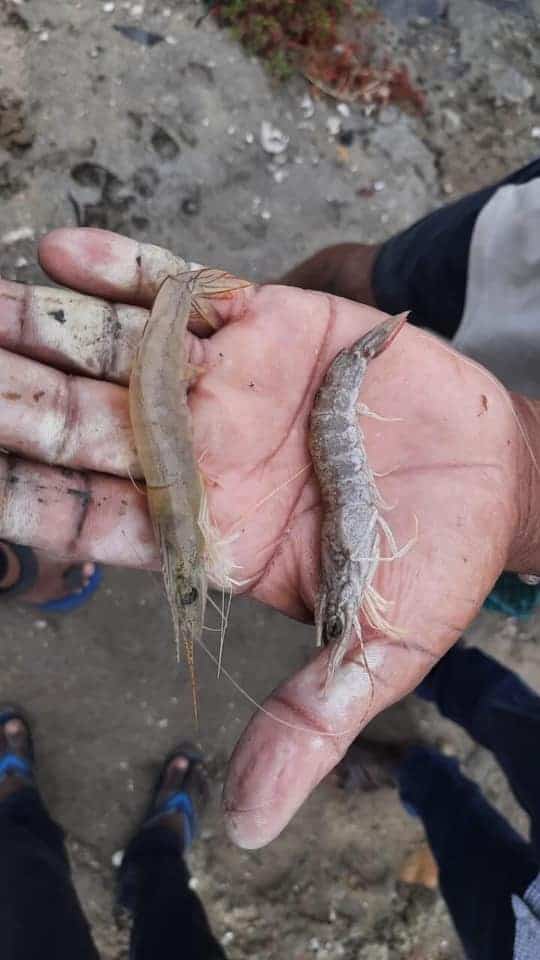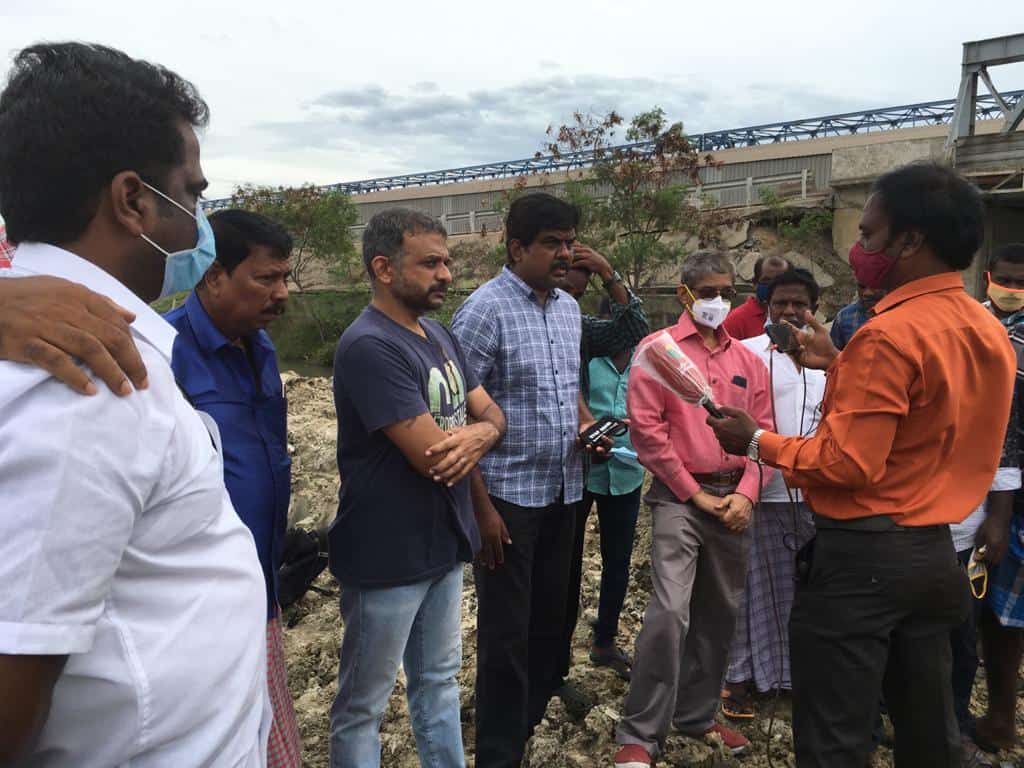The fresh, glistening, almost seemingly transparent prawns caught from Ennore was once a prime delicacy for seafood lovers in the city. But that is merely the stuff of memories now. In place of the succulent prawns of the past, one can only find dark, fatty prawns that no longer feed as much on worms as on the fly ash deposited by the thermal power stations in the waters of Ennore.
“Prawns caught from the rivers of Palaverkadu and Kosasthalaiyar saw huge demand, both locally and internationally. Ash-coloured prawns (Sambal era in Tamil) form the majority of the catch now and as we are aware that fly ash pollution is what they thrive on, we have stopped buying them,” says V Devanayaki, a former councillor of Kattukuppam village in Ennore.
The Union Ministry of Environment, Forest and Climate Change (MoEF&CC) issued a draft notification on December 3, 2020, for utilisation of fly ash by coal and lignite-based power plants. The latest amendment, which is expected to be notified soon, introduces a penalty regime for non-compliance for the first time. There are several notifications by the ministry that mandate using fly ash in brick and cement industries. However, the thermal power stations in Ennore have always taken the easy route of dumping it in the river bed.

Fly ash pollution has posed a grave threat to the environment and ecology in this part of Chennai for many years now. A resident of Kattukuppam village for 41 years, Devanayaki has been witness to the slow and steady destruction of the Ennore creek. More than 1000 acres of the river’s backwaters are heavily contaminated with fly ash from the leaking pipelines of TANGEDCO. And it does not seem likely to be resolved any time in the near future.
The problem is now further compounded by TANGEDCO’s construction activities. “Now, a bridge to support a pipeline for carrying coal-ash from Stage III of North Chennai Thermal Power Station to the leaking ash dyke in Seppakkam is being constructed, by dumping construction debris and sand on the riverbed and the watercourses,” says a release from The Coastal Resource Centre. The release points out that TANGEDCO has not obtained the requisite environmental clearance or Consent to Operate for the project, either under the Air (Prevention and Control of Pollution) Act, 1981 or the The Water (Prevention and Control of Pollution) Act, 1974.
Another Press Release from the ‘Save Ennore Creek’ Campaign on July 14th says, “After using an alignment that avoids waterbodies to get an approval, TANGEDCO has illegally altered the alignment without informing the Union environment ministry, and gone ahead with a completely different alignment that runs mostly on waterbodies.”
Generated by burning coal in thermal power stations, fly ash causes air and water pollution. It is mandatory to use fly-ash in the construction of roads or flyover embankments within a radius of 300 km of thermal power plants, according to the Ministry of Road Transport and Highways. Fly ash can also be used in making bricks, thus reducing fly ash pollution and conserving soil. MoEFCC in its recent draft notification (December 2020) extended the deadline of 100 per cent utilisation of fly ash to another three to five years.
Read more: How industrialisation has rung the death knell for Ennore’s ecology
Urgent action needed
At the behest of local fishermen, a three-member team of Professor S Janakarajan, G. Sundarrajan of Poovulagin Nanbargal and musician T.M. Krishna recently assessed violations at the Ennore creek. The inspection team observed that the Ennore backwaters resemble an environmental crime scene, and the TNPCB is clearly missing in action.
Degradation to Ennore creek has direct implications for Chennai. “Unabated encroachments at the Kosasthalaiyar and Arinyar rivers have reduced their water-holding capacities. The fact that these rivers flooded in 2015 reflect the damage already done to them,” says G Sundarrajan of Poovulagin Nanbargal.

Ennore is a victim of unabated and unplanned development. Many court orders and many government promises later, it is still waiting for a government that can undo the harm. “Ennore estuary has to be declared a protected zone. As the thermal power plants here are ageing and are on the brink of shutting down, we request the government to not build new ones here at least. TANGEDCO should take up the responsibility and clean up the creek through bioremediation,” said Sundarrajan.
“A third-party audit conducted at the thermal power plants of Ennore revealed that the plants are not efficient. These plants have exceeded their time span. The state government should take an immediate decision about the situation at Ennore,” said a senior TNPCB official, on the condition of anonymity.
An inter-departmental government committee with fisheries, TANGEDCO and the water resources department should be constituted on priority to restore the creek and save the livelihoods of the local fishermen.
A cycle of impunity
In the past 25 years, there have been many orders by the Madras High Court and the southern bench of the National Green Tribunal to clear out the fly ash from the waters of Ennore. In 1996, the Madras High Court ordered TANGEDCO to stop dumping ash into the creek. All of these directions were flouted and in 2017, the NGT came down heavily on TANGEDCO for failing to comply with its orders. They were given a week to clear out the fly ash and warned of closure in the event of their failure to do so, but clearly nothing has happened.
The National Green Tribunal (NGT) also constituted an expert committee to conduct a detailed investigation about environmental crime at Ennore. As part of the investigation, noted soil biologist and ecologist Sultan Ahmed Ismail conducted a first-ever official study at Ennore that revealed alarming facts. “The test findings showed that all fish samples contained high concentrations of heavy metals, which can be hazardous and kill people in the long run when consumed,” the study says.
“The life-giving waters, the mangrove stands, the home of the shrimp and the crab, the dining room of the flamingos and pelicans — these are all poramboke. To desecrate these living spaces in the name of development is an unforgivable crime. Unfortunately, between an insensitive government and an inept, corrupt TNPCB, TANGEDCO has continued to dig, build and dump on the Ennore wetlands,” wrote Nityanand Jayaraman, an environmental activist on Facebook.
In a joint statement, the Save Ennore Creek Campaign and fishers in the region have said, “TANGEDCO’s audacity in misleading the minister, and the irrelevance of TNPCB as a regulator spotlights the absence of the rule of law in Tamil Nadu. This is a test case for the new government to walk its talk about providing a clean administration. Given the encouraging steps taken by the government in the appointments of efficient senior environment and forest staff, we are hopeful that the government will ensure that the law prevails in this case.”
When we called Thiruvottiyur MLA, K P Sankar, for a comment on the roadmap ahead, he said, “De-silting the fly ash from the water bodies of Ennore is a priority. The DMK government aims to complete it before the commencement of local body elections.” Incidentally, local body elections in Chennai have been pending since 2016, when the term of the last elected council expired. Latest reports suggest that Chief Minister M K Stalin has directed the Municipal Administration Department to conduct elections to urban local bodies by the end of the year.